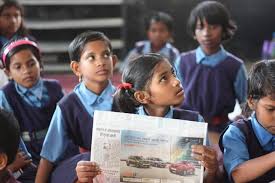
Five Northeast States Among India’s Top 10 in Literacy Rankings

 :
| Updated On: 23-May-2025 @ 3:12 pm
:
| Updated On: 23-May-2025 @ 3:12 pmSHARE
According to the government’s latest Periodic Labour Force Survey (PLFS) for 2023–24, five northeastern states have emerged among India’s top 10 most literate regions, highlighting a remarkable achievement in the region’s educational development. Mizoram leads the country with a 98.2% literacy rate, earning the distinction of being declared India’s first fully literate state under the ULLAS (Understanding Lifelong Learning for All in Society) initiative. This milestone was formally announced on May 20 by Chief Minister Lalduhoma at Mizoram University, following a state-led effort that successfully educated over 1,600 adult learners through volunteer-driven programs.
The Northeast’s dominance in national literacy rankings signifies a major shift in the country’s educational map, long dominated by states in the south and west. Alongside Mizoram, Nagaland secures the third position with a 95.7% literacy rate, while Meghalaya follows in fifth place at 94.2%. Tripura, with a 93.7% literacy rate, shares the sixth spot with Chandigarh, and Manipur rounds out the top ten with a 92% literacy rate.
These statistics underscore the strong emphasis on education in the northeastern region, driven by community involvement, consistent state-led initiatives, and a cultural prioritization of learning. Mizoram, in particular, has long been recognized for its robust school attendance and low dropout rates. The ULLAS initiative has further amplified these efforts by focusing on adult literacy, lifelong learning, and the inclusion of marginalized groups, making Mizoram a national model.
Despite this regional progress, India’s broader literacy landscape remains uneven, with stark contrasts visible across various states. Andhra Pradesh, for instance, reports a literacy rate of just 72.6%, while Bihar and Madhya Pradesh lag with 74.3% and 75.2% respectively. These states highlight the ongoing challenges of educational access, retention, and quality, particularly in rural and underserved areas.
The disparity emphasizes the need for targeted interventions, resource allocation, and scalable education models inspired by the success of northeastern states. Issues like poverty, child labor, insufficient school infrastructure, and lack of adult education continue to hinder progress in several parts of the country. Furthermore, gender disparities and social inequality also play a role in limiting literacy growth in these lagging regions.
In conclusion, the PLFS 2023–24 results not only celebrate the northeastern states’ achievements but also call attention to the urgent need for comprehensive educational reforms across India. By replicating the community-driven models and inclusive strategies seen in Mizoram and its neighboring states, the country can strive toward a more equitable and literate society, aligned with its national development goals.